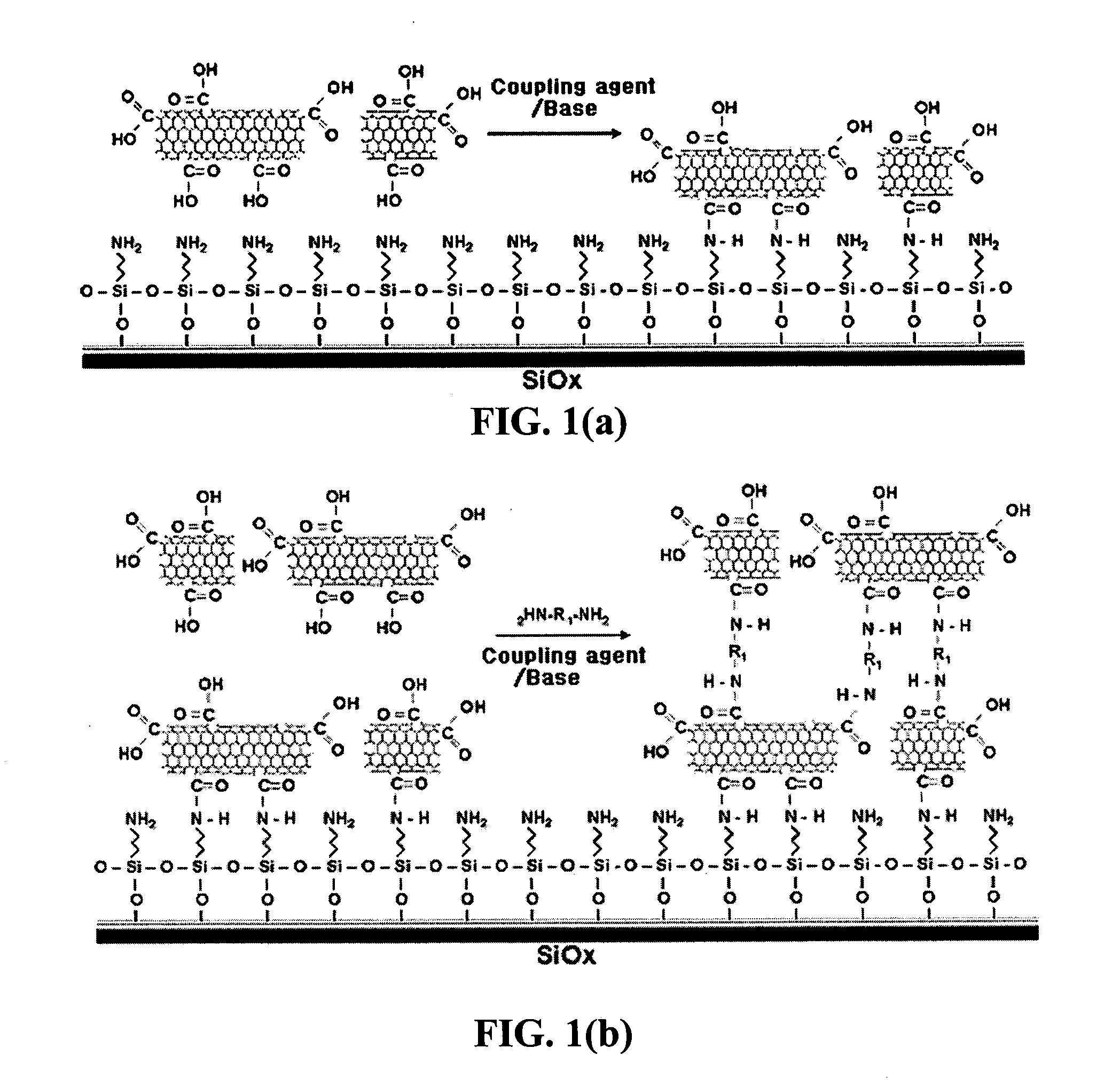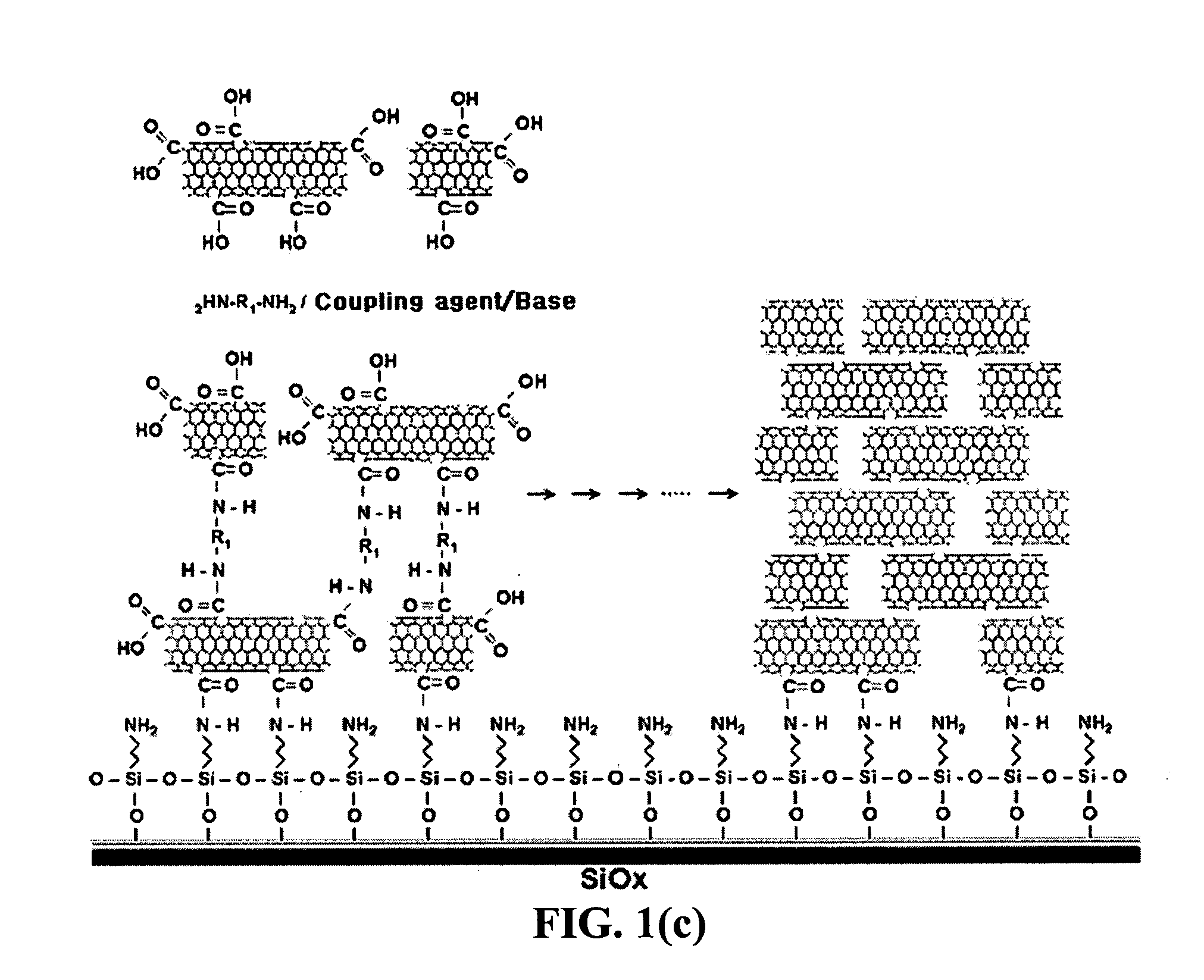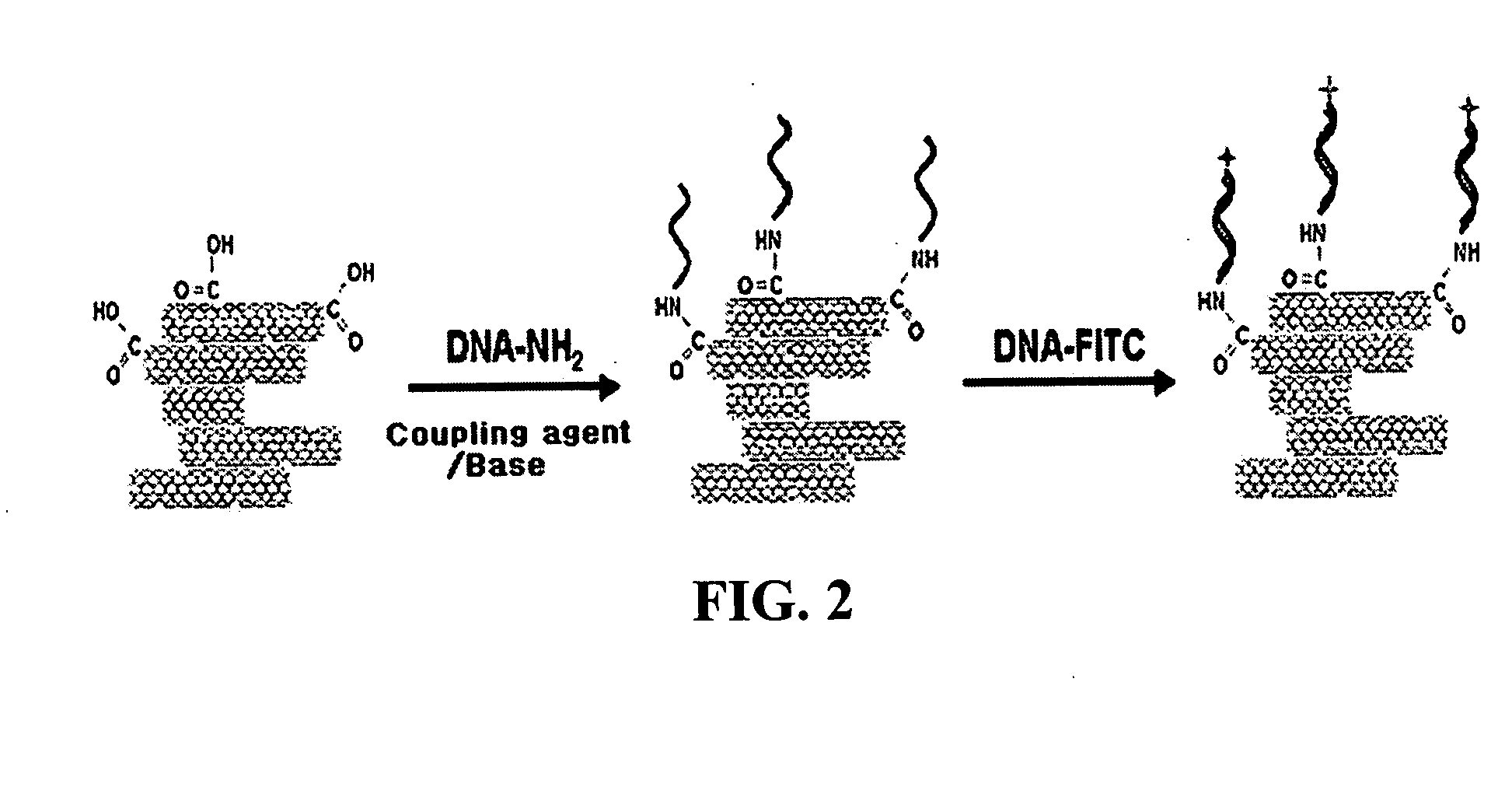Method for fabricating a biochip using the high density carbon nanotube film or pattern
a carbon nanotube film and biochip technology, applied in the field of biochips, can solve the problems of inability to apply the selective immobilization pattern on the surface, the disadvantage of relative weakness to environmental changes, and the method that does not apply cnt to the fabrication and development of biochips. achieve the effect of improving the defects involved
- Summary
- Abstract
- Description
- Claims
- Application Information
AI Technical Summary
Benefits of technology
Problems solved by technology
Method used
Image
Examples
example 1
[0044] Preparation of CNT Having Exposed Carboxyl Groups
[0045] The CNT, which can be used in the present invention, is not particularly limited and can be commercially available products or prepared by a conventional method. Pure CNT should be carboxylated at its surface and / or both ends to be used in the present invention.
[0046] The pristine CNT was refluxed in a nitric acid for 45 hours at 90° C. and centrifuged. The residue was washed in distilled water and filtered through a 0.2μm filter. The purified CNT was cut in a sonicator containing an oxidizing acid (a mixture of nitric acid and sulfuric acid) for 16 hours. The cut CNT having exposed carboxyl groups was filtered through a 0.1 μm filter to obtain CNT with a predetermined size.
example 2
[0047] Preparation of a Substrate Having Exposed Amine Group
[0048] In the present invention, the substrate having exposed amine group was prepared by modifying with aminealkyloxysilane on a substrate such as silicon, glass, melted silica, plastics, PDMS (polydimethylsiloxane). However, commercially available substrates, which had been surface-treated with amine, can also be used.
example 3
[0049] Preparation of a High Density CNT Film Having Carboxyl Group Exposed on its Surface
[0050] The CNT having exposed carboxyl groups, prepared in Example 1, was reacted with the substrate having exposed amine groups, prepared in Example 2 to form a CNT single layer on the substrate by amide bond formation between the carboxyl group and the amine group (FIG. 1(a)).
[0051] Then, the CNT attached to the substrate by amide bond was reacted with a diamine type organic compound having double amine functional groups while CNT having exposed carboxyl groups was reacted with amine groups at the other side of the diamine type organic compound to form another CNT layer by the formation of amide bond (FIG. 1(b)).
[0052] Next, the chemical reaction between the CNT having exposed carboxyl groups and the diamine type organic compound was repeated to prepare a high density CNT film comprising the CNT layer and the organic diamine layer laminated alternately for n times and having carboxyl group...
PUM
| Property | Measurement | Unit |
|---|---|---|
| size | aaaaa | aaaaa |
| total volume | aaaaa | aaaaa |
| density | aaaaa | aaaaa |
Abstract
Description
Claims
Application Information
 Login to View More
Login to View More - R&D
- Intellectual Property
- Life Sciences
- Materials
- Tech Scout
- Unparalleled Data Quality
- Higher Quality Content
- 60% Fewer Hallucinations
Browse by: Latest US Patents, China's latest patents, Technical Efficacy Thesaurus, Application Domain, Technology Topic, Popular Technical Reports.
© 2025 PatSnap. All rights reserved.Legal|Privacy policy|Modern Slavery Act Transparency Statement|Sitemap|About US| Contact US: help@patsnap.com



